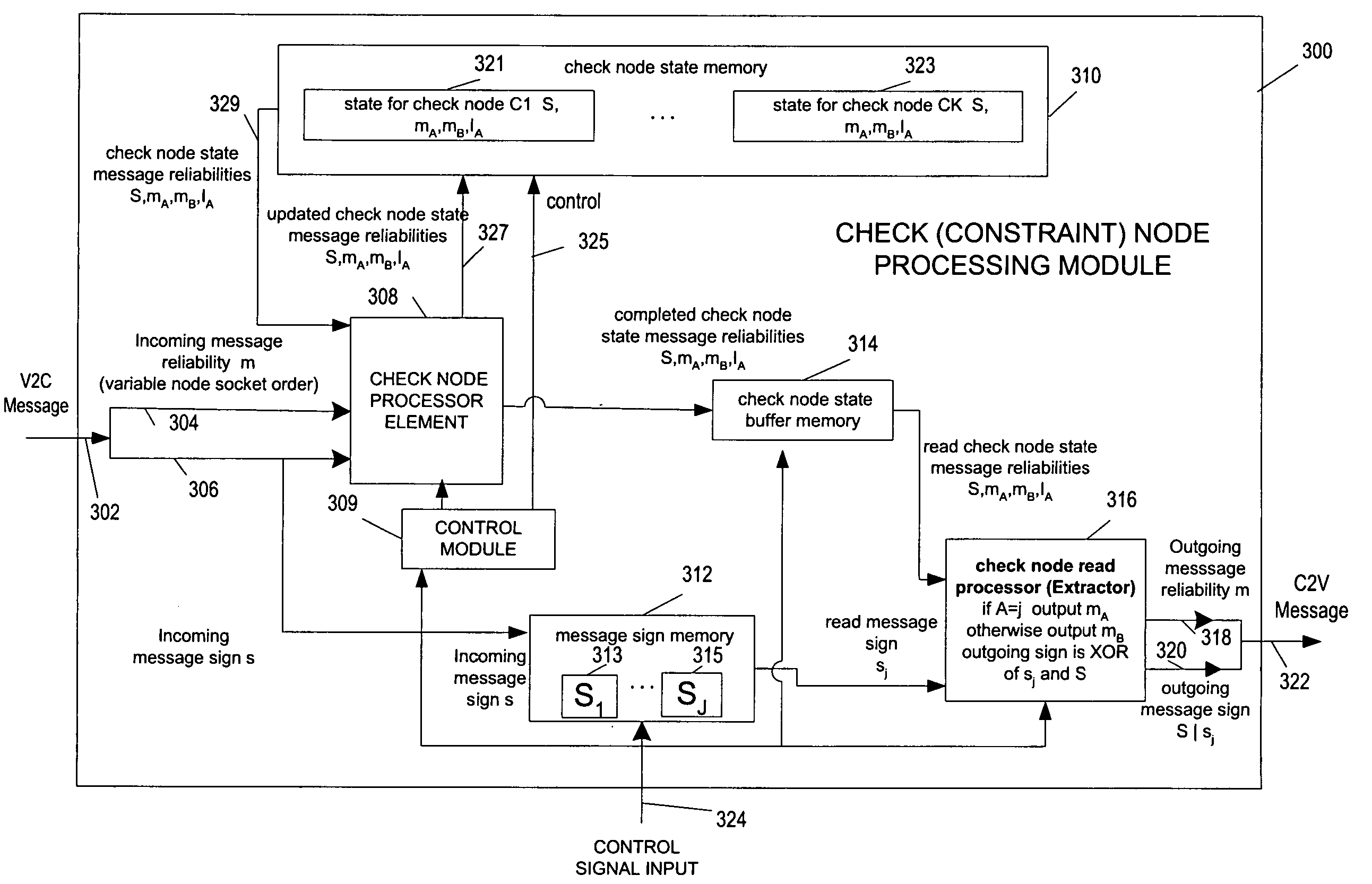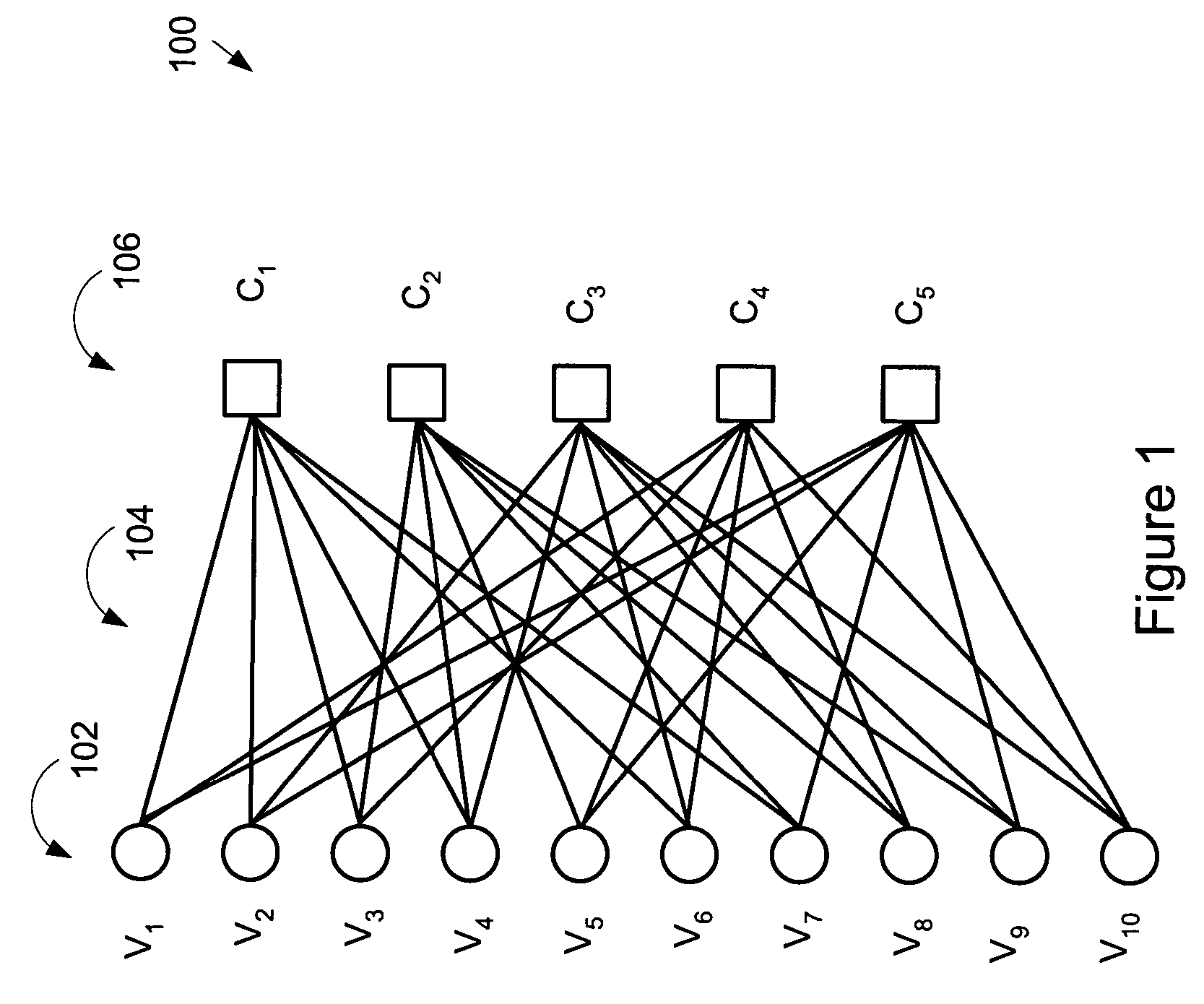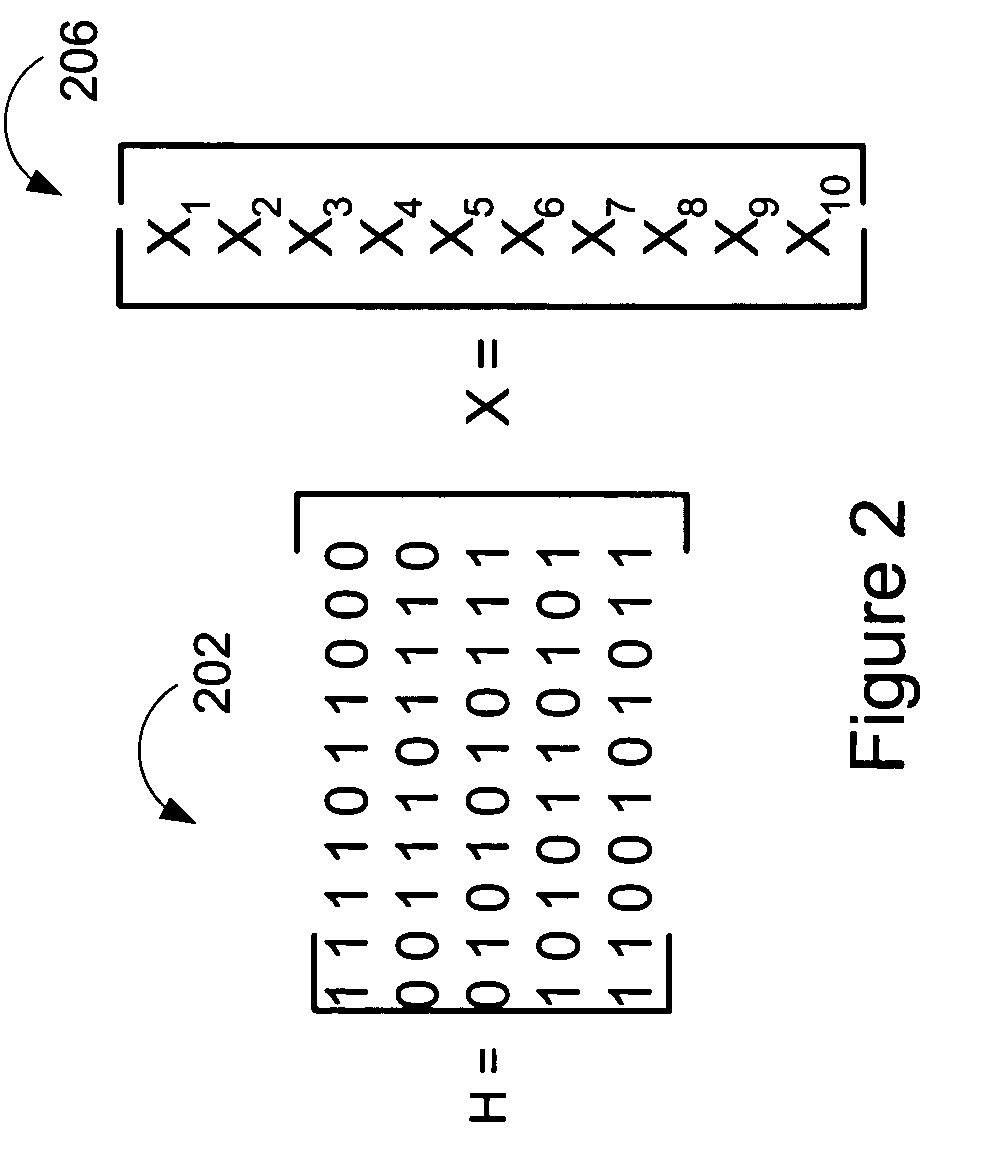Memory efficient LDPC decoding methods and apparatus
- Summary
- Abstract
- Description
- Claims
- Application Information
AI Technical Summary
Benefits of technology
Problems solved by technology
Method used
Image
Examples
Embodiment Construction
[0046] The following (3) related applications are hereby expressly incorporated by reference and are to be considered part of the present application: U.S. patent application Ser. No. 09 / 975,331 filed Oct. 10, 2001 entitled “METHODS AND APPARATUS FOR DECODING LDPC CODES”, U.S. patent application Ser. No. 10 / 117,264 filed Apr. 4, 2002 entitled “NODE PROCESSORS FOR USE IN PARITY CHECK DECODERS”, and U.S. patent application Ser. No. 10 / 618,325 filed Jul. 11, 2003 entitled “METHODS AND APPARATUS FOR ENCODING LDPC CODES”.
[0047] Various embodiments of the present invention are directed to methods and apparatus which provide a simple, e.g., low hardware complexity, implementation of an LDPC decoder architecture. The methods and apparatus of the invention take advantage of the observation that, for certain algorithms, the reliabilities sent out from a check node take on one of two possible values and one of those values is sent along only one message edge. This is the case, for example, fo...
PUM
 Login to View More
Login to View More Abstract
Description
Claims
Application Information
 Login to View More
Login to View More - R&D
- Intellectual Property
- Life Sciences
- Materials
- Tech Scout
- Unparalleled Data Quality
- Higher Quality Content
- 60% Fewer Hallucinations
Browse by: Latest US Patents, China's latest patents, Technical Efficacy Thesaurus, Application Domain, Technology Topic, Popular Technical Reports.
© 2025 PatSnap. All rights reserved.Legal|Privacy policy|Modern Slavery Act Transparency Statement|Sitemap|About US| Contact US: help@patsnap.com



